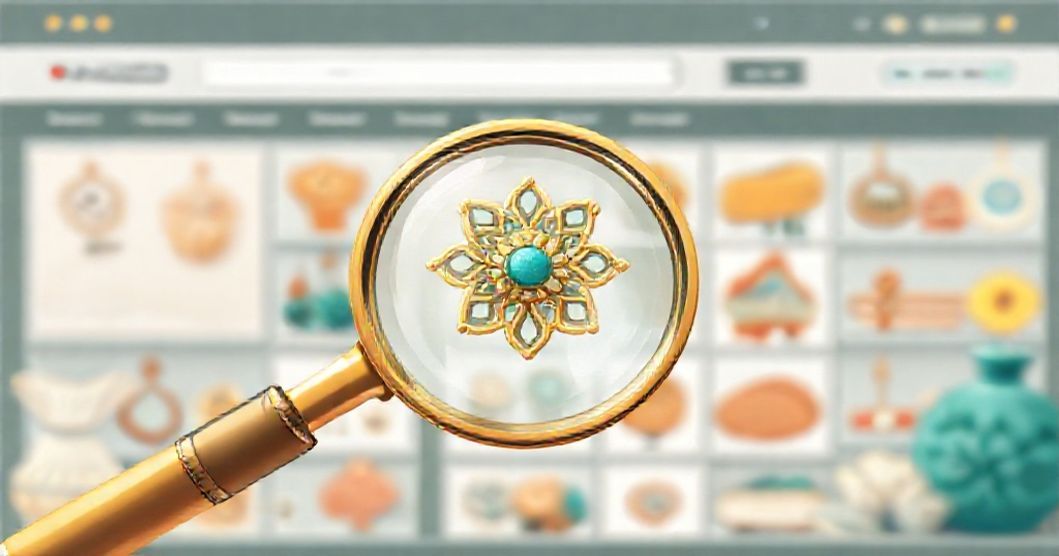Etsy stands as a unique global marketplace, a vibrant hub where creativity meets commerce, connecting artisans and collectors worldwide. For aspiring sellers and established entrepreneurs alike, understanding the intricacies of Etsy product selection is paramount. This guide delves into strategic approaches for identifying, developing, and positioning products that resonate with the platform’s diverse customer base, ensuring a pathway to sustainable growth and recognition within this dynamic ecosystem.
Understanding the Core Appeal of Etsy Products
The Etsy marketplace distinguishes itself through its focus on handmade, vintage, and craft supply items. This core identity attracts buyers specifically seeking unique, personalized, or ethically produced goods not typically found in mass retail. Sellers on Etsy thrive by offering authenticity and craftsmanship, establishing a strong connection with customers who value individuality and the story behind each item. Recognizing this fundamental demand is the first step toward successful product development and shop curation on the platform.
Identifying High-Demand Etsy Product Categories
Successful Etsy sellers often begin by analyzing prevalent market trends and identifying product categories consistently attracting buyer interest. Evergreen categories such as jewelry, home décor, apparel, and art prints frequently lead in sales volume. Beyond these broad classifications, deeper research into subcategories and current aesthetic preferences reveals opportunities. Monitoring top-selling items and exploring seasonal shifts can provide valuable insights into what buyers are actively searching for and willing to purchase within the platform.
Uncovering Profitable Niche Markets on Etsy
While broad categories offer volume, significant profitability often lies within specialized niche markets. Instead of merely offering “jewelry,” consider focusing on “personalized minimalist birthstone necklaces” or “eco-friendly polymer clay earrings.” Niche products cater to specific buyer demographics with unique preferences, leading to less competition and higher perceived value. Thorough market research, including keyword analysis and competitor review, is crucial for identifying these underserved segments and tailoring products accordingly for Etsy success.
Strategic Pricing Models for Optimal Etsy Profitability
Establishing the right price for Etsy products involves a delicate balance between covering costs and perceived value. Sellers should factor in material expenses, labor time, overheads, and Etsy fees, then consider competitive pricing within their niche. Beyond a simple cost-plus approach, value-based pricing, which reflects the uniqueness and craftsmanship of an item, can significantly enhance profitability. Transparent pricing builds customer trust and accurately communicates the quality and exclusivity of each carefully crafted product.
Crafting Compelling Product Listings: Descriptions and Imagery
The presentation of Etsy products online is as vital as the product itself. High-quality, well-lit photographs from multiple angles are non-negotiable, showcasing the item’s details and craftsmanship. Equally important are engaging product descriptions that tell a story, highlight unique features, and incorporate relevant keywords for search engine optimization. A compelling listing helps buyers visualize the product in their lives, fostering an emotional connection and increasing the likelihood of a purchase on the platform.
Leveraging Personalization and Customization for Etsy Sales
One of Etsy’s most powerful selling points is the opportunity for personalization and customization. Offering buyers the chance to add names, dates, specific colors, or unique designs to an item dramatically increases its appeal and perceived value. Products like custom portraits, engraved jewelry, or personalized apparel consistently perform well due to their unique, sentimental nature. Integrating customization options can differentiate your Etsy products, attracting a dedicated customer base seeking bespoke items.
Analyzing Competitors and Differentiating Your Etsy Offerings
Understanding the competitive landscape on Etsy is essential for long-term success. Sellers should regularly analyze similar shops, examine their product offerings, pricing strategies, and customer reviews. This analysis is not about imitation but about identifying gaps in the market and refining your unique selling proposition. Differentiating your Etsy products through superior quality, innovative designs, exceptional customer service, or a distinctive brand story helps you stand out in a crowded marketplace.
Adapting to Seasonal Trends and Holiday Shopping Peaks
Etsy’s sales cycles are heavily influenced by seasonal events and major holidays. Developing product lines that align with these periods, such as Valentine’s Day, Mother’s Day, Halloween, or Christmas, can significantly boost sales. Planning ahead for these peaks, from product design to marketing, ensures that your shop is ready to meet increased demand. Adapting your Etsy products to seasonal themes keeps your inventory fresh and relevant, capturing various buying impulses throughout the year.
Exploring Digital Products and Printables on Etsy
Beyond tangible goods, digital products and printables represent a rapidly growing and often highly profitable category on Etsy. Items like digital planners, art prints, wedding invitations, social media templates, or knitting patterns require a one-time creation effort but can be sold repeatedly without inventory or shipping costs. This model offers high-profit margins and appeals to a broad audience seeking instant downloads. Strategic keyword use and clear product visuals are key to success in this digital realm of Etsy products.
The Role of Sustainable and Eco-Friendly Products on Etsy
A significant segment of Etsy buyers prioritizes sustainability and ethical consumption. Offering eco-friendly products, made from recycled materials, organic fabrics, or sourced through fair trade practices, resonates strongly with this conscious consumer base. Highlighting the sustainable aspects of your Etsy products and production processes in your listings and shop story can build trust and attract dedicated buyers. This approach not only meets consumer demand but also contributes positively to brand reputation.
Expanding Your Product Line: Bundles, Upsells, and Cross-Sells
To maximize revenue, consider strategies for expanding your Etsy product offerings through bundles, upselling, and cross-selling. Creating product bundles (e.g., a matching jewelry set) offers greater value to customers. Upselling involves offering a premium or enhanced version of an existing product. Cross-selling suggests complementary items (e.g., a matching card with a gift). These tactics encourage higher average order values and foster customer loyalty by providing comprehensive solutions.
Navigating the Etsy Landscape for Product Success
Achieving success on Etsy requires a thoughtful and strategic approach to product selection and presentation. By understanding the platform’s unique identity, meticulously researching market demands and profitable niches, and consistently refining your offerings, sellers can carve out a distinctive presence. Focus on creating unique, high-quality products, paired with compelling listings and excellent customer service. This holistic strategy empowers sellers to thrive within the creative and competitive Etsy marketplace, building a sustainable and rewarding business venture.





